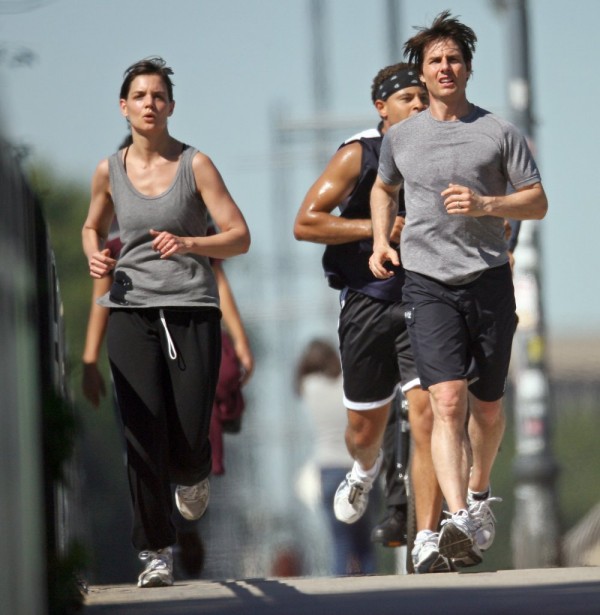Walking: Excellent cardiovascular benefits for the advanced age groups. Should be done briskly with swinging of the arms. Comfortable shoes must be worn. May be done morning or evening for 30-60 minutes.

Jogging: Suitable for younger age group below 50 years. 30 minutes is all that is required and may be done continuously, or jog and walk in between when fatigued. The pace of jogging is equal to that of a brisk walk run on soft or grassy surface. Wear comfortable clothes and breathe freely.

Swimming: For those who know how to swim, 20 minutes of continuous swimming is sufficient. Alternately swim the length of a pool 10-20 meters, rest at the end for 30 seconds, swim back. 10 such lengths are good. Use any stroke you know. They are all of almost equal cardiovascular and muscular benefit.

Cycling: For any age group. Minimum time 45-60 minutes of continuous controlled fast cycling. Cycling up slopes gives added benefit. Ordinary cycles are good enough and indoor stationary exercycles may also be used at low resistance for 45 minutes.

Games: For the fitter younger age group. Get fit first before playing games such as squash, badminton, tennis, handball, basketball, football etc. Warm up before the games. 30-45 minutes of the game is sufficient. Weekend or once a week games must be avoided unless other fitness programmes are done on other days. Play within your capacity.
STRENGTH EXERCISES
Improve  with 10-20 repetitions of each of these movements.
with 10-20 repetitions of each of these movements.
YOGA
1. Yoga should preferably be done under expert supervision 2-3 times per week.
2. In case you know Yoga, we suggest that the following ‘asanas’ be included in your programme.
3. Each Yogasana is repeated 2-3 times except serial Nos. 1, 14 & 15.

4. Persons with back problems should avoid serial Nos. 2, 4, 10 & 12.
5. Persons with Cardiac problems, HBP, etc. Should avoid serial 4 and 5.
6. This programme will not only keep you fit, but is also beneficial for those persons who have high B.P., respiratory problem, mental strain, head – aches, digestive ailments, back problems, joint problems, etc.
STANDARD YOGASANAS
1. Stand warm up for Pawan Muktasana series.
2. Suryanamaskar (Sun Salutation) Effect – on full body including heart and circulation.
3. Ardh-halasana (30, 60, 90 degrees, double leg raises) Effect – on abdomen, legs, back reproductive organs.
4. Sarbangasana (Shoulder stand) Effect – on brain, nervous system, thyroid, circulation.
5. Halasana (Plough pose) Effect – on spine, nervous system, back, lungs.
6. Matsyasana (Fish pose) Effect – on chest, neck, thyroid, lungs.
7. Bhujangasana (Cobra pose) Effect – on lower back, reproductive organs, lungs, spine, chest, abdominal organs.
8. Salabhasana, (Locust pose) Effect – an buttocks, legs, hips, constipation, gas, digestion, etc.
9. Dhanurasana (Bow pose) Effect – on abdomen, digestion, legs, back.
10. Naukasana (Boat pose) (V sit-ups) Effect – on spine, abdomen, chest, etc.
11. Bakrasana (Half spinal twist) Effect – on spine, fat on waist, gas, digestive organs.
12. Paschmottasana (Sitting toe touch) or Padahasatasana (Standing toe touch) Effect – on digestion, spine, legs.
13. Trikonasana (Triangle) Effect – on spinal nerves, waist, digestion.
14. Pranayama (Deep breathing) 10 rounds each.* Anulome / Vilome – alternate nostril breathing, and* Kapalbhatti. – Belly breathing Effect – on lungs and respiratory system.* Shavasana (Corpse pose) – as often as required. Effect – on physical / mental relaxation.
GYM EXERCISES / WEIGHT TRAINING
Weight training is basically for strengthening and building up the muscles. An all-round programme must have some stretching and cardio-vascular exercises as well. In addition, weight training loads the bones thereby strengthening and protecting against osteoporosis. The points to keep in mind in weight training are as follows:
1. The ideal weight training schedule is on alternate days I.e. 3 days a week with a complete rest on weekends.
2. The systems of training different muscle groups on different days may be good for competitive sportsmen. The best system for non-competitive sportsmen is to exercise the entire body in each session. The major muscle groups are: Upper body – Shoulders, Arms, Chest and Lower body – Back, Abdomen, Legs.
3. Suppleness and stamina can also be built up through weight training by following a body builder-type schedule. Weights are also used to stretch muscles, build muscular endurance and cardiovascular stamina by repeating each exercise by using lighter weights with more repetitions.
4. If repetition is too easy, the weight used is too little. And in case it is not possible to complete the repetitions, it means the weight carried is too heavy.
5. A repetition is one complete exercise movement from the starting point to finish and then back again to the starting point. A set is a group of repetitions of the same exercise. Therefore, for the upper body 8 repetitions is one set. For the lower body, 15 repetitions forms one set.
6. We prescribe three sets of exercises for each muscle group. However, several systems of weight training prescribe different repetitions as well as different sets.
 with 10-20 repetitions of each of these movements.
with 10-20 repetitions of each of these movements.











